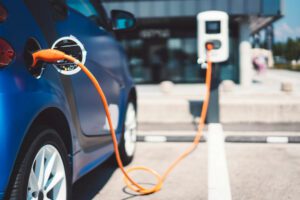The CEO of Stellantis said in an interview with European newspapers on Tuesday that electrification could create “social consequences”, and efforts to move toward an all-electric industry are motivated by politics. His comments come just days after models in Stellantis brands Citroën, Opel, and Peugeot had ICE options eliminated in favor of electric powertrains.
Speaking with journalists from Les Echos, Handelsblatt, Corriere della Sera, and El Mundo, Carlos Tavares posited the transition from combustion engines to electrification was too hasty. High manufacturing costs and retail pricing establish electric cars as transportation for the wealthy, not for the general public.
Tavares stated, “We know that a mild-hybrid vehicle costs half as much as an EV. We must not lose sight of the fact that we risk losing the middle classes who will no longer be able to buy a car and that there will be social consequences.”
The average transaction price for an EV was $56,437 according to Kelley Blue Book, standing over $10,000 higher than the average transaction price for ICE and EV vehicles combined. The upfront cost being significantly higher, electric vehicles pose a financial challenge to adoption that, so far, government agencies and states have been trying to offset.
Debate over headlong pursuit of EV
Tavares sees hybridization as an attractive middle ground – one that could make more efficient vehicles affordable to the masses while achieving the goal of lowering emissions.
| Related: EV and AV companies start off 2022 with strong VC funding, plus big moves in the mobility space |
He said in the interview, “In the end, is it better to accept very efficient thermal hybrid cars so that they remain affordable and bring an immediate carbon benefit? Or should we have 100% electric vehicles that the middle classes will not be able to afford while asking the member states to continue to increase their budget deficits to subsidize them? It’s a societal debate I’d love to have, but for the moment I don’t see it.”
 It seems that there’s a disparity in understanding regarding efficiency and carbon offset calculations. While all-electric models are much more efficient and green once they reach the retail market, there are inordinate amounts of pollution and other by-products produced during raw material procurement and manufacturing. Those effects are often neglected when EVs are presented to the consumer.
It seems that there’s a disparity in understanding regarding efficiency and carbon offset calculations. While all-electric models are much more efficient and green once they reach the retail market, there are inordinate amounts of pollution and other by-products produced during raw material procurement and manufacturing. Those effects are often neglected when EVs are presented to the consumer.
“Given the current European energy mix, an electric car needs to drive 70,000 kilometers (44,000 miles) to compensate for the carbon footprint of manufacturing the battery and to start catching up with a light hybrid vehicle, which costs half as much as an EV,” says Tavares.
Automakers are only one link in the supply chain
Factoring into Tavares’ thought process is a comprehension of the “back end” in manufacturing. Unlike conventional ICE models, many of the components and materials used in building and assembling EVs comes from companies and subcontractors unbeholden to the carmakers themselves. Efforts to reduce manufacturing costs are crucial to making vehicles that are affordable to the masses. Yet, much of the costs are beyond control like the parts manufacturing supply chains for gas and diesel models. The aggressive progression appears to Tavares to be motivated more for political reasons.
Pointedly, Tavares summed it up saying, “What is clear is that electrification is a technology chosen by politicians, not by industry.”
Did you enjoy this article from Jason Unrau? Read other articles on CBT News here. Please share your thoughts, comments, or questions regarding this topic by submitting a letter to the editor here, or connect with us at newsroom@cbtnews.com.
Be sure to follow us on Facebook and Twitter to stay up to date or catch up on all of our podcasts on demand.
While you’re here, don’t forget to subscribe to our email newsletter for all the latest auto industry news from CBT News.










